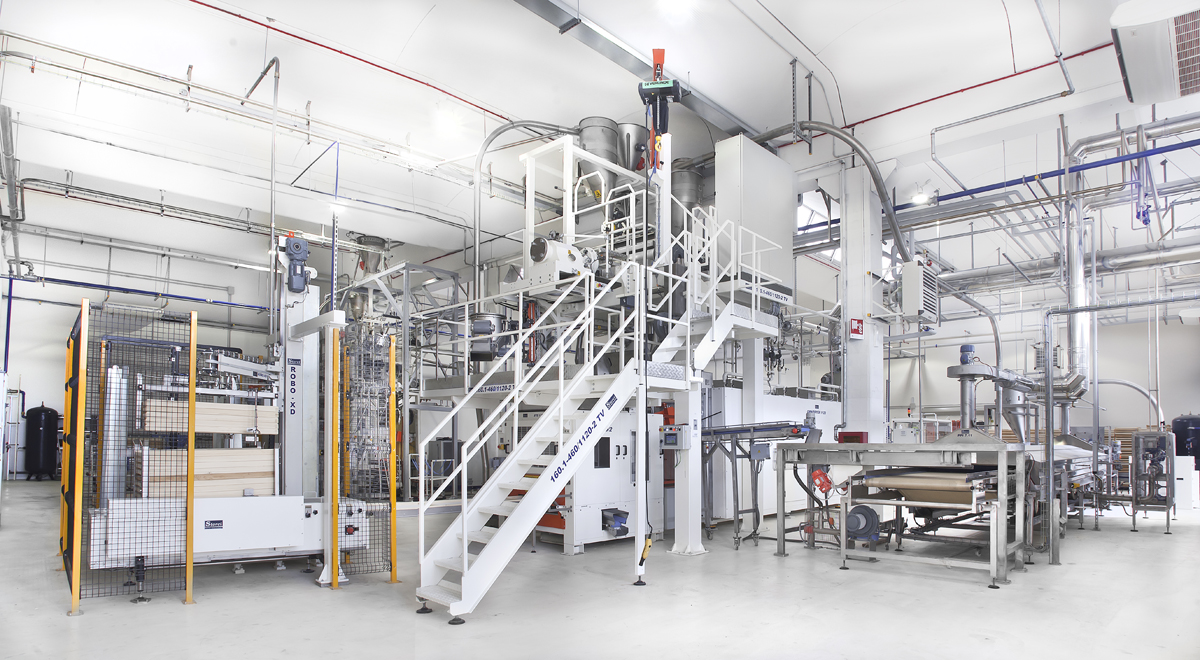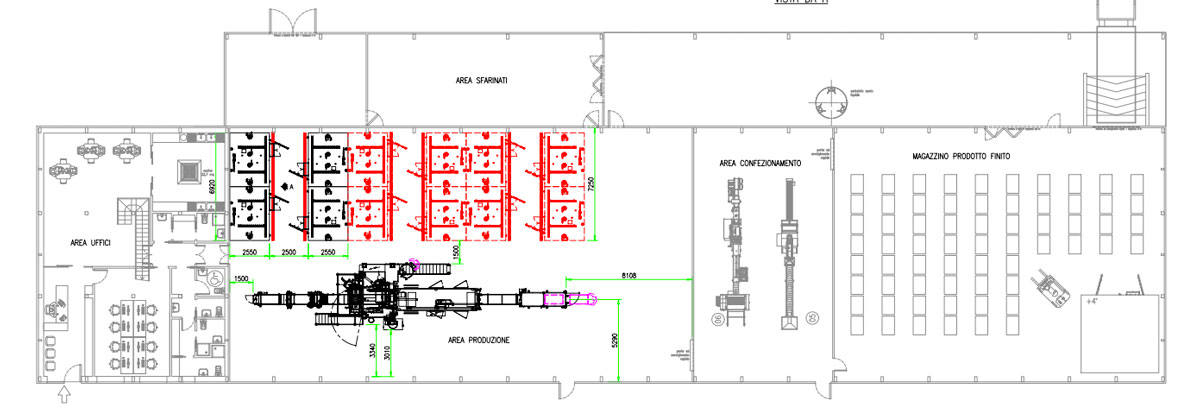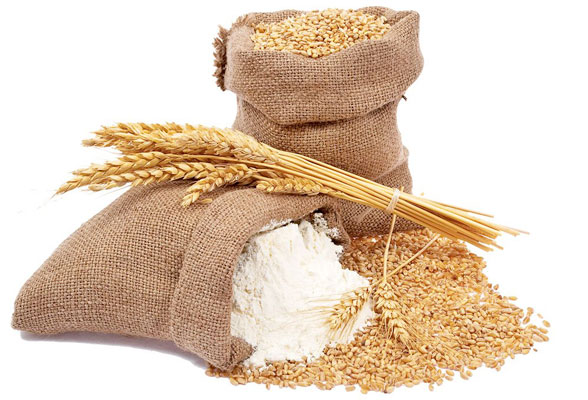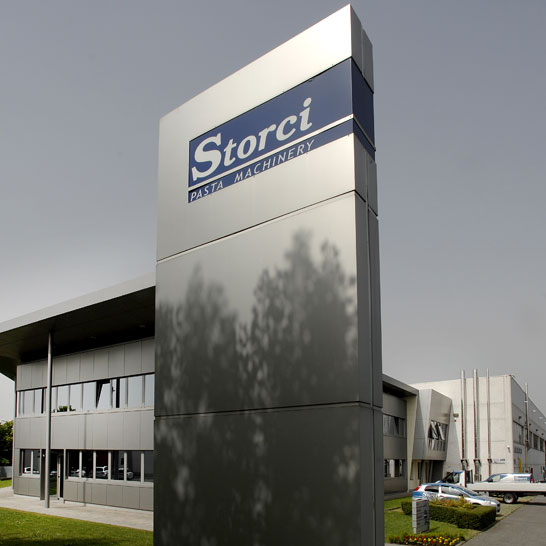
Dry pasta is a basic product of the Italian diet, greatly requested abroad. In 2020, the year of the great crisis for many companies, pasta saw an increase in production up to peaks of 40% in the month of March alone in Italy and 16% abroad. (IPO).
Then in 2021, the year of recovery, pasta made it possible to protect invested capital by reversing price increases of up to 33% on the market.
Pasta can be counted among those goods which, as far as consumption and distribution are concerned, have acquired an intrinsic value such as to be not subject to devaluations due to market upheavals. This makes it, in effect, a store of value for many entrepreneurs. Moreover, from a commercial point of view, as much as 56% of Italian industrial production is destined for abroad, while only the remaining 44% is reserved for our tables. The value of our exports has more than doubled in the last ten years. (IPO).
This fact, hiding an enormous unexpressed potential for dry pasta in the world, has meant that our own production technologies undergo changes to satisfy markets with different uses and traditions. Noodles, for example, are nothing more than long semolina pasta that can be dried both in frying and naturally by means of dryers just like dry pasta. Almost 100 billion portions of noodles are consumed every year in the world (WINA) of which 20% naturally dried, an ever-increasing figure due to the numerous food diseases caused by the classic processing of fried noodles (wikipedia).This healthy trend on a product made of semolina and water and naturally dried, puts Storci S.p.a. in the forefront as a possible supplier of this kind of suitable systems. Thanks to our Research and Development we have created a technology that allows pasta to be dried after being pre-cooked in the steam chamber. Steam cooking, as we know, is by far the healthiest of all possible solutions, while drying remains slow and at a low temperature. Having carried out this project a few years ago, the market already sees us as a leader in the sector, enabling many of our customers to export a product that is highly requested and excellent at the same time.
The study of plant engineering must firstly follow the analysis of the production process in compliance with the haccp rules. To this end, once found an area of about 2000 square meters, it is advisable, in a study phase, to choose a food analysis LAB recognized by the Ministry of Health, a technician from Storci, a plumber, an electrician and a renovations company representative. Once the dwg has been received by the company, it will be the responsibility of the Storci designers drawing up optimal production plans.

Example of automatic short and long pasta line with static drying (from left to right) with entrance, office area, changing rooms. Production area with production plant and static dryers. Above, raw material storage area. Central area intended for packaging. On the right the finished product storage and shipping area.
As for the shapes to be produced, the choice is nearly only one. According to authentico, an association of producers committed to preserving the authenticity of made in Italy food, the following is the ranking of the 10 best-selling shapes:


Semolina, whole durum wheat semolina and different types of soft wheat flours (not for the Italian market) are the main flours used to produce pasta. The final quality of dried pasta depends on the characteristics of the flour and the complex of production and technological variables, as everyone knows.
Flour more suitable for quality pasta is obtained from durum wheat semolina compared to soft wheat. Durum wheat semolina has gluten in greater quantity and quality and represents the main ingredient of Italian pasta in the world, compulsorily being its only raw material (Dec.Pr.Rep. N. 187/2001 and subsequent amendments).
Wheat is a product of agriculture and as such is subject to variations in quality based on the climate, soil and agronomic cultivation techniques. The long experience allows the selection and mixing of the best varieties of grains to obtain an excellent pasta.
Grains from France, Russia, Mexico, North America, and North Africa as well as Italian grains are among the most used in the world to produce pasta. To these are added more traditional grains, ancient and local ones which are less performing for the industry but just as good in quality. Pasta makers have the possibility to choose these flours, assessing their quality in the laboratory with specific analyzes and in pasta making, carrying out small-scale tests to get samples useful for evaluation in cooking as well as suitable for market micro-analyzes.
By marketing choice or because durum wheat is not available locally, pasta is obtainable with multiple varieties of cereals such as corn, rice, lighthouse, rye and pseudo-cereals such as buckwheat. Recently, legume pastas such as lentils, chickpeas, peas have appeared on the shelves and are aimed at the celiac and health-conscious market.
Lately the price of grains has increased although the attempt to contain pasta final price which, in general, has always had a low and often unjustified selling price. today the cost of semolina accounts for about 15-20% of the selling price per kilo as far as durum wheat is concerned. By changing flour, for example, if derived from less productive and more sought-after varieties or in the case of legumes, the incidence on total costs increases and remains the most important item of finished pasta production cost.
Find out how Pasta di Canossa produces in Ferrara excellent dry pasta with our machines!

The sale in the MMR (Mass Market Retailers) represents a point of arrival for all food companies in the developing world. It certainly offers a huge audience throughout the national territory and allows a stable and safe planning of sales and growth prospects, due also to their financial strength. Advantages of no small importance even if entering the large-scale retail trade is not easy. From the presentation to a buyer of a new product, to the insertion of the goods, it takes roughly a year.
It is a good idea to make a preliminary selection of the distribution chains of our interest so that no time is wasted. In fact, the offer is truly vast and differs primarily by territorial positioning and price range of the products offered.
Once a prospect of potential brands has been generated, the product can be presented to buyers. In the meantime, however, it is advisable to prepare for the meeting: an investigation about the products of other brands already on display is necessary, to be able to endorse the characteristics differentiating our product, followed by a price list made exclusively for the large-scale retail trade.
Large-scale distribution holds nearly the total sales on the Italian food market and is always looking for new eco-friendly products that can offer quality and a good price. The advice, therefore, is not to approach large-scale distribution as a potential customer, but as a partner who wants to invest together with producers by offering their spaces, logistics and customers.
The negotiation that we are about to open will necessarily include some costs that should be planned in advance. In fact, when the large-scale retail trade opens a new channel, it does it in style, with enormous, appealing volumes. For this reason, it should be better taking into consideration some requests that might come from the buyer, such as the following.
Merchandising contribution
Many marketing activities are carried out by the MMR itself, such as product positioning. The choice of the shelf height (better if positioned at the hands height), the insertion in “gondolas” (the gondolas are the aisles, the central area is the most requested) or in promotional islands (the promotional islands are worthier, monothematic shelves) are some of the elements that could determine the value of the contribution.
An end of year award
Not everyone asks for the end-of-year award, as it is going into disuse for the benefit of the consumer. It may happen, however, that some still ask for it and therefore it is good to foresee it.
A merchandise discount on the invoice
Useful for "steering" the minimum sale price (according to the law, apart from rare regulated exceptions, it is not possible to "undersell", that means the retail prices cannot be lower than the invoice price + VAT). It must therefore be counted for any promotional events.
Moreover, there are some important details never to be neglected when meeting a buyer: always bringing samples of the product as well as having brochures, posters and a website. Large-scale distribution can therefore be an excellent springboard, as long as product placement is done in a conscious way and with perfect cost planning Click here).
Export is probably the last step of a developing company. Dry pasta is luckily a product suitable for export, thanks to a three-year shelf life and no packaging bound to modified atmospheres. It is the symbol of the Made in Italy, so it is not difficult to find potential importers. It is an extremely widespread and inexpensive food (data on the spread of pasta in the world). The export potential is huge, indeed.
Therefore, in our opinion, no pasta factory with a production capacity of 1000 kg / h can turn down exports. But where to export? And above all, how to export?
Being related to nutrition, we must be aware that many countries require complex, bureaucratic certification procedures. Notwithstanding, we have a winning card that is being in Europe. In fact, Europe is based on four fundamental freedoms: freedom of movement of people, services, capitals ... .. and freedom of movement of goods! This expands our range of possible importers to as many as 26 countries (beyond Italy). And if in Italy the per capita annual consumption of dry pasta is 23 kg, in France it is 8.3 kg, in Germany it is 7.9 kg, 4.2 in Poland, 3.6 in Spain and so on. Data that look promising for the growth potential of this product in Europe, even though it is already well known.
Sometimes, however, exporting outside the European Community can be a forced choice. In this case, the first step is to make use of all the institutional tools made available by our country. For example, ICE (Institute for Foreign Trade) organizes training courses for companies wishing to export. The Ministry of Foreign Affairs, in addition to giving guidelines on the stability of countries, provides, through its Economic Observatory, the economic summary sheets of all the countries of the world. The consulates, moreover, always have an office for exports from Italy. Finally, Unioncamere makes its offices available for the various bureaucratic requirements.
The search for business contacts abroad, on the other hand, takes place mainly at trade fairs. The best way to make your products known and tasted is to invest in trade fairs.
The Fourth Industrial Revolution (or Industry 4.0) is the ongoing automation of traditional manufacturing and industrial practices, using modern smart technology. The Internet of things (IoT), improved communication and selfmonitoring, that can analyze and diagnose issues without the need for human intervention, is integrated in this process. Thanks to this system, in case of need, our technicians can intervene without being physically on the spot and the company can monitor each situation, like the alarms status and the production phase. We have also created specific working stations, undergoing further evolution, to give remote technical assistance to the Customer with the help of detectors and webcams, Storci staff can pilot the technician of the pasta factory, wherever he is. For more information watch the video!

We are also present in the USA to provide you with assistance and support for all requests and needs.
Storci S.p.A.
246 NW Plaza Dr., Riverside, MO 64150, United States
Since 1991 we have been working in the pasta machinery sector, in the pursuit of technology and innovation, making sure that the right attention is always given to tradition. Our team consists of active and expert professionals, set in a lively and versatile organization, operating with a sole aim: Customers' satisfaction. Whether it be engineers, technologists, mechanics, designers, customer service...our staff always make sure that the possible Buyer can fully reach his goal. We guarantee expertise and a great cooperation. Although it is no longer a family-run business, due to the great growth of the past few years, the Company has been keeping up its original philosophy as its main feature, towards both its Partners, thanks to a successful cooperation, exchange of views and mutual trust, and especially its Customers. This attitude also applies to the people working in the Company and we continuously pay attention to training and refresher courses, because we are aware of the appreciation of each individual and of the positive outcome this has on the whole team.

Strada Lemignano 6, a Lemignano di Collecchio in provincia di Parma - CAP 43044
ITALIA